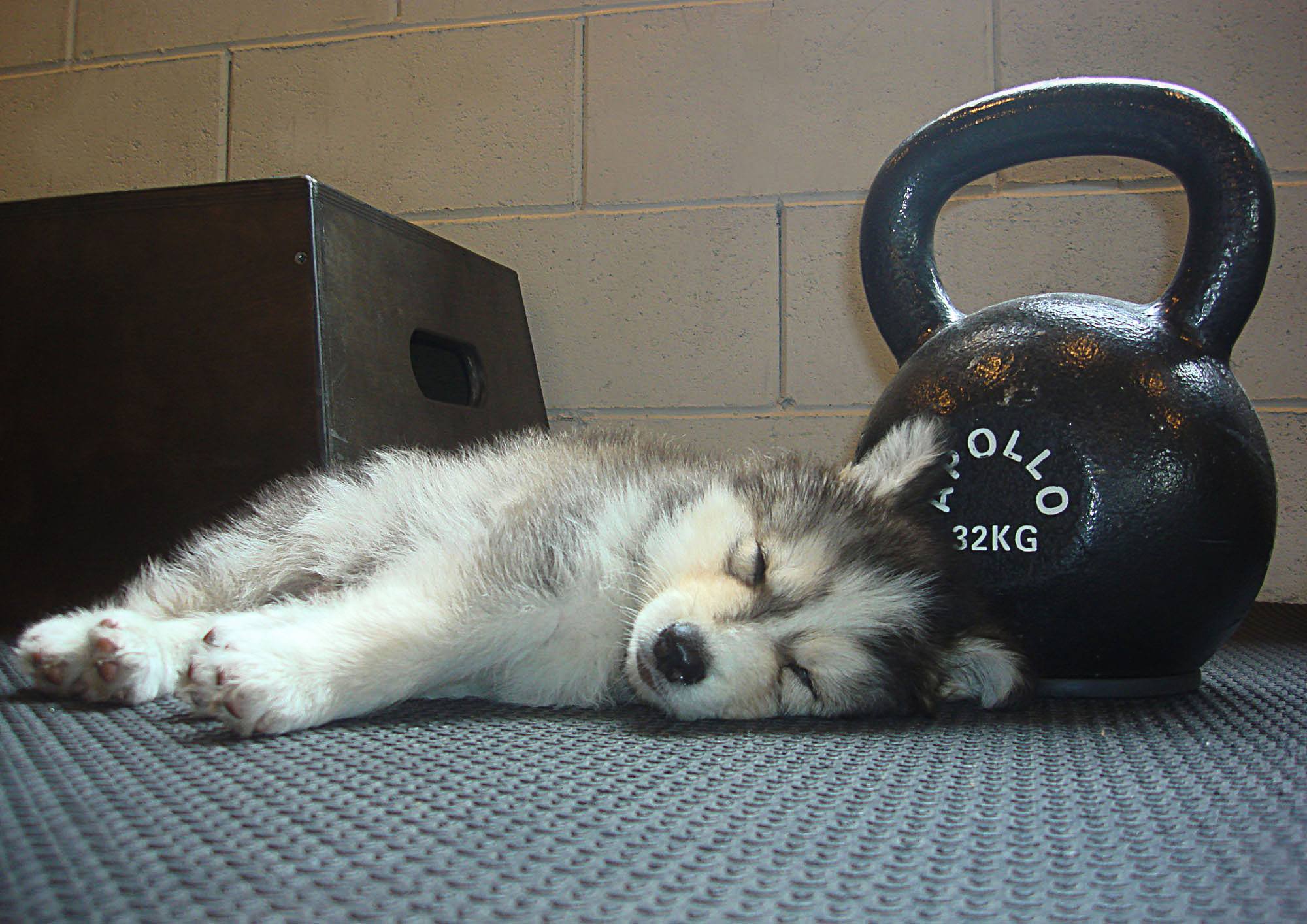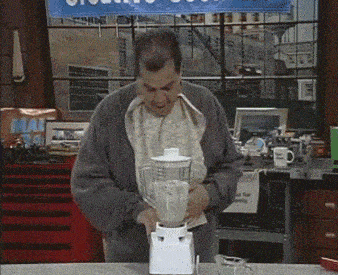It’s no secret that the world in general is in fairly bad shape. Now, I’m not talking about wars, economic turmoil and shady politics, I’m focusing my attention on easily preventable health issues that have taken over the world. There’s a pandemic of obesity, heart disease and joint pains raging out there, and every single one of us should strive to be that brave soldier holding the front line. It’s easy to point at the government and ask them what they are going to do about these issues, but we all need to take control of our own lives and make some serious lifestyle changes if we want to improve our health.
Unfortunately, having a healthy mindset and obsessing about healthy living is not enough to actually make you healthier and stronger. Too many people these days manage to get the theoretical part right, but hardly ever get to apply what they have learned. Here are a few reasons why you need to do a bit more than just think healthy.
1. The best workout program won’t do you any good if you don’t stick to it
Everyone knows that you need a good workout program to get the best results from your training. You need to plan out specific exercises, give the body enough time to recover, work in different types of training so that they don’t clash and cause other aspects of your fitness to stall – e.g. being too tired from running to lift weights afterwards – and work in a steady progression. This is all true, but sometimes we get caught up with choosing exercises and activities that we end up with an excellent plan, albeit for an advanced professional athlete.
The thing is, a mediocre program that is written with your fitness level in mind and that you stick to religiously, will trump the best and most scientific programs that have too much workload for you to handle. In the same vein, if you keep skipping training sessions, and even go for a week or two without training, it doesn’t matter how well-rounded your routine is. Intensity and consistency are the things that will get you results. Keep training 2-4 days a week, get some light physical activity on your off days and you will see great results.
2. By contemplating the best daily and weekly schedule, you keep yourself from actually making consistent progress
So, say you have a decent training program and you stick to it. However, you still want to get all the possible health benefits, and this requires several different types of training. So you try to squeeze in 3 trips to the gym into your weekly schedule, on top of the 3-4 distance running days. Now you hear that all this hard impact isn’t good for the joints, so you turn two of your running days into swimming days. Maybe on Fridays you could go dancing instead of doing more boring forms of cardio. Yeah and maybe next week you can do exercises in the lower rep range for strength and some sprinting, or maybe you could sign up for MMA classes.
You see where this is going. Instead of sticking to 1-3 activities – e.g. lifting weights on a good full body program, hopping on a stationary bike 2 times a week and going to dance class 2 times a week – you want to do 5-6 activities, and end up making incredibly slow progress in every area, feeling fatigued and possibly giving up on everything altogether. If you want to avoid injury and make steady progress, pick a couple of things and work on them as much as you can.
3. Sleeping in and sitting around the house for 3 straight days is not “effective recovery”
“Well, I’ve heard that the body needs time to recover, which means plenty of rest between training sessions”, you say to yourself and then you sit on the couch for the entire weekend eating takeout. Your body needs some rest, sure, but as long as you get 7-9 hours of sleep, stretch and eat enough healthy food, you can train every other day. Once you get good it can even be 5-6 days a week. Light activities like running or cycling at a slow steady pace or even some brisk walking can be done virtually every day.
In fact, light activities such as these can be beneficial for recovery and help reduce muscle soreness. Don’t reward yourself with 3 days of lying around the house every time you do some moderately difficult physical activity, but do try to get more quality sleep, stretch and eat more protein, as well as fruit and vegetables.
4. Blending some juice a couple of times a month to “cleanse” does not constitute a healthy diet
It might seem like a very healthy thing to do for people who don’t know much about nutrition or how the body works, but “cleanses” are not healthy at all. There’s nothing healthy about severely restricting your calories and only taking in certain micro and macronutrients at the detriment of others. Instead of eating an unhealthy diet and “making up for it” with a few days on nothing but magic [insert exotic geographical location] something berries in juice form, try to make better dietary choices on a daily basis. Limit junk food, sugary drinks and snacks, and go for more lean protein, fish, whole grains, fruit, vegetables and olive oil.
5. Investing in tons of home gym equipment will not burn calories – you have to use it
When we decide to change our lives there is no better way to cement our resolve and show the world our commitment than to immediately invest time and money into our health and fitness. However, many people will go out and buy all sorts of gym equipment – most notably stationary bikes, dumbbells, ab wheels, jump ropes and decline benches for sit-ups – only to use them once and leave them as overpriced dust collectors. Fitness equipment is not home décor. It is great to have a few items like these at home for those times when you can’t make it to the gym or if you don’t have a good gym near you, but you have to remind yourself to use the equipment regularly.
6. Buying expensive juicers and stocking up on vegetables and buckwheat flour won’t do you any good if you can’t keep your urges under control
The same as fitness equipment, people buy quality kitchen appliances and stockpile healthy food, only to later order pizza because they don’t feel like going through the trouble of making a meal for themself. I find juicers in particular to be a waste of money for most people, as it can be much less of a hassle to just eat a bit of fruit and go on with your life than to prepare juice and clean up after. You can also drink much more juice than you would be able to eat fruit, so there’s the issue of calorie control to think about as well. The bottom line is, find relatively healthy fast food restaurant alternatives, but also learn a bit about cooking and prepare some food in advance, because you will sometimes need a quick meal.
7. Focusing on a few “superfoods” needlessly restricts your micro nutrient intake
We’ve touched on this briefly before with “cleanses”. Once people hear about the best 3-4 foods for health or weight loss, they jump on the bandwagon and start eating nothing but those a few select foods. As much as it is healthier and better for weight control to eat broccoli, brown rice, kale, a bunch of berries, chicken breast, some nuts and bananas, it’s not going to give your body all the micronutrients it needs and you may very well be overloading on some, which is not healthy at all. This is why you should focus on a diverse diet where you eat different kinds of food throughout the week – everything from leafy green vegetables, legumes and chicken, to potatoes, fish and tomatoes.
8. No matter how healthy your meal choices are, you’ll gain weight if you don’t control your appetite
Another big point about healthy food is that it will pack pound on you and even get you obese if you eat a lot of it. Gorillas and elephants are strict vegetarians, who feast mostly on leaves, and yet they are enormous. There were also plenty of fat people in Greece last time I checked, and they eat an incredibly healthy Mediterranean diet. This should tell you more about nutrition than any slick healthy food marketing ploy. So, try to make healthy diet choices, but keep your appetite in check as being overweight carries a whole host of health risks, regardless of what foods got you to that point.
9. Doing only 1-2 minutes of warm up and stretching is a sure-fire way to get injured during training
Someone with a healthy mindset will preach about the importance of all aspects of fitness, particularly dynamic and static stretching, warming up before training and exercises geared toward improving mobility and posture. Yet when you look at even some fitness trainers at the gym, they will do a few jumping jacks and a minute or two of twisting and turning before jumping into a workout, and then another minute of stretching afterwards. This is not a good thing, as it will lead to cumulative injuries and issues with mobility and proper posture down the line. Do 5 minutes of light cardio and 5 minutes of dynamic stretching before your workout, and then 5 minutes of light cardio as a cool down followed by 12-15 minutes of static stretching after you’ve completed the workout.
10. When you set incredibly idealistic goals you are setting yourself up for failure
Someone with a healthy and goal-oriented mindset might look at what’s possible to achieve in terms of fitness and overall health in a certain period of time, and then set a bunch of idealistic goals. However, while striving to achieve as much as you possibly can is great, once you start failing to reach unrealistic goals you will begin to lose motivation and even get depressed about the situation. This is bad for both your mental and physical health. Instead, try looking at what is possible to achieve for an average person and set your initial goals a bit lower. This way you will feel great if you exceed these average goals, and won’t miss your target even if you don’t do everything right.
Being healthy takes a lot of work and patience, and while a healthy mindset is definitely good for staying motivated and focused, it is not enough to reach your fitness goals. This is one of those cases where it is better to be a doer instead of a thinker.






















































